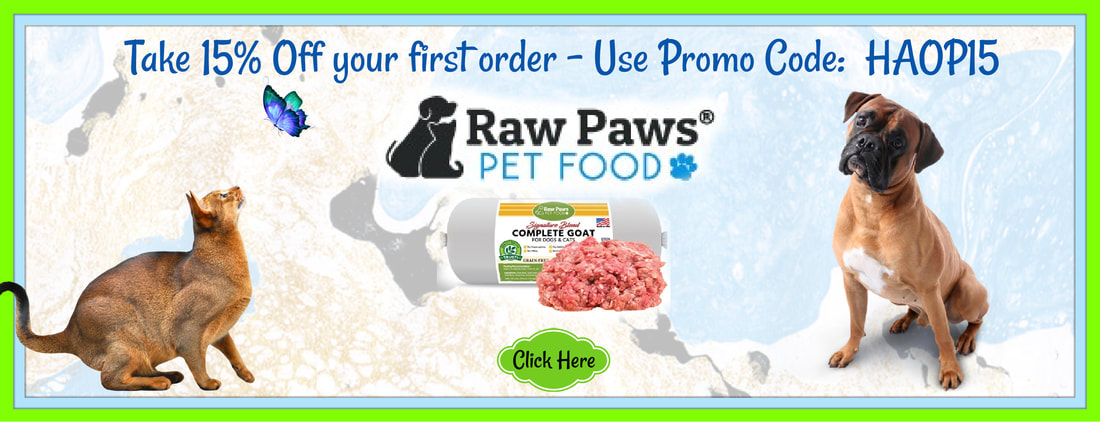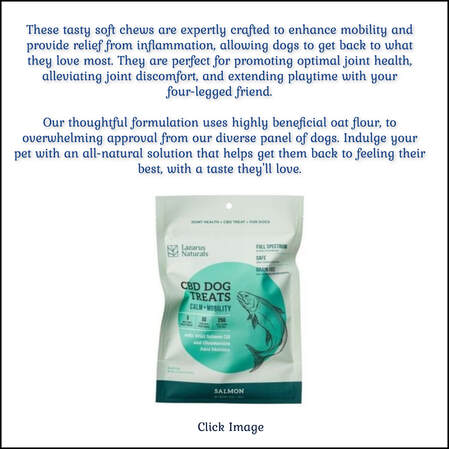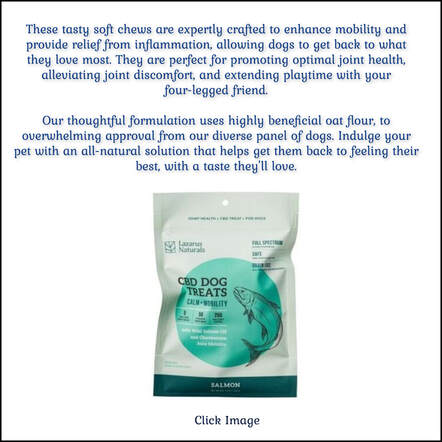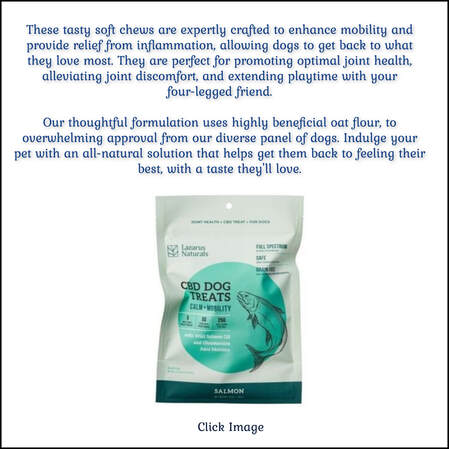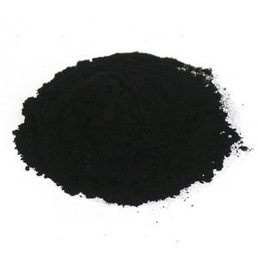
"Charcoal medicine" has been used by hospitals and Naturopathic doctors for numerous ailments and drug overdoses. It is available in health food and supplement stores usually in capsule form but you can also find it in bulk. Because of its many uses and indefinite shelf life it's a great item to keep in the medicine chest.
ACTIVATED CHARCOAL USES FOR FOOD POISONING
Unfortunately, food poisoning is becoming more and more common in this age of mass produced food. Activated charcoal has the ability to cure food poisoning by absorbing the toxins and bacteria. It will ease vomiting and stomach cramps from the flu and even cure a dogs upset stomach!
· This compound is approved for use in humans and animals.
· Human formulations: Actidose-Aqua (Paddock), Actidose with Sorbitol (Paddock), Liqui-Char (Jones Medical), CharcoAid (Requa), CharcoAid 2000 (Requa), and various generic preparations of activated charcoal.
· Veterinary formulations: Toxiban® (Vet-A-Mix), Liqui-Char®-Vet (Jones Medical), UAA Gel® (Vedco), and generic activated charcoal suspensions or gels.
ACTIVATED CHARCOAL USES FOR FOOD POISONING
Unfortunately, food poisoning is becoming more and more common in this age of mass produced food. Activated charcoal has the ability to cure food poisoning by absorbing the toxins and bacteria. It will ease vomiting and stomach cramps from the flu and even cure a dogs upset stomach!
· This compound is approved for use in humans and animals.
· Human formulations: Actidose-Aqua (Paddock), Actidose with Sorbitol (Paddock), Liqui-Char (Jones Medical), CharcoAid (Requa), CharcoAid 2000 (Requa), and various generic preparations of activated charcoal.
· Veterinary formulations: Toxiban® (Vet-A-Mix), Liqui-Char®-Vet (Jones Medical), UAA Gel® (Vedco), and generic activated charcoal suspensions or gels.
Toxiban Suspension with Sorbitol
ToxiBan Suspension activated charcoal is leading brand of activated charcoal used as the universal antidote for animal poisonings. ToxiBan protects the intestinal lining as it absorbs toxins in the gastrointestinal tract.
ToxiBan is the "gold standard" for treating animal poisonings.
Toxicants That Bind to MedChar™, Activated Charcoal, USP
Acetaminophen
Amphetamines
Anthelmintics
Antibiotics
Aspirin
Atropine
Barbiturates
Camphor
Cantharides
Carbamazepine
Carbamates
Chlordane
Chloroquine
Chlorpheniramine
Cocaine
Diazepam
2,4-D (dichlorophenoxy
acetic acid)
Digitalis
Digitoxin
Ethylene glycol*
Fungicides
Hexachlorophene
Ipecac
Isoniazid
Malathion
Mefenamic acid
Meprobamate
Methylene blue
Methyl salicylate
Morphine
Muscarine
Narcotics
Nicotine
Nortriptyline
Organic iodine
Organic metal compounds
Organochlorine insecticides
Organophosphorus
insecticides
Parathion
Phenobarbitol
Phenothiazine
Phenylbutazone
Phenylpropanolamine
hydrochloride
Phenytoin
Quinacrine hydrochloride
Quinidine
Quinine
Rodenticides
Salicylamide
Salicylates
Strychnine
Sulfonamides
Theophylline
Tricyclic antidepressants
*Tests for ethylene glycol must be conducted before ToxiBan is administered to prevent false positive reactions.
ToxiBan Suspension activated charcoal is leading brand of activated charcoal used as the universal antidote for animal poisonings. ToxiBan protects the intestinal lining as it absorbs toxins in the gastrointestinal tract.
ToxiBan is the "gold standard" for treating animal poisonings.
Toxicants That Bind to MedChar™, Activated Charcoal, USP
Acetaminophen
Amphetamines
Anthelmintics
Antibiotics
Aspirin
Atropine
Barbiturates
Camphor
Cantharides
Carbamazepine
Carbamates
Chlordane
Chloroquine
Chlorpheniramine
Cocaine
Diazepam
2,4-D (dichlorophenoxy
acetic acid)
Digitalis
Digitoxin
Ethylene glycol*
Fungicides
Hexachlorophene
Ipecac
Isoniazid
Malathion
Mefenamic acid
Meprobamate
Methylene blue
Methyl salicylate
Morphine
Muscarine
Narcotics
Nicotine
Nortriptyline
Organic iodine
Organic metal compounds
Organochlorine insecticides
Organophosphorus
insecticides
Parathion
Phenobarbitol
Phenothiazine
Phenylbutazone
Phenylpropanolamine
hydrochloride
Phenytoin
Quinacrine hydrochloride
Quinidine
Quinine
Rodenticides
Salicylamide
Salicylates
Strychnine
Sulfonamides
Theophylline
Tricyclic antidepressants
*Tests for ethylene glycol must be conducted before ToxiBan is administered to prevent false positive reactions.
ACTIVATED CHARCOAL USES FOR POISONS AND OVERDOSES
Charcoal can absorb many toxins and prevent them from entering the body. Activated charcoal should be given as soon as possible if there is suspected poisoning or overdose. CALL POISON CONTROL OR A HOSPITAL IMMEDIATELY! They can tell you what dosage to give. Having charcoal on hand can save a life!
Our dogs, cats, birds and livestock can come in contact with toxics plants, fertilizers and pesticides, spoiled garbage, blue-green algae, flea products, grapes, chocolate or many other toxins that can threaten their lives. Call your veterinarian for dosage but here's a guideline for using charcoal for animal poisoning:
Charcoal can absorb many toxins and prevent them from entering the body. Activated charcoal should be given as soon as possible if there is suspected poisoning or overdose. CALL POISON CONTROL OR A HOSPITAL IMMEDIATELY! They can tell you what dosage to give. Having charcoal on hand can save a life!
Our dogs, cats, birds and livestock can come in contact with toxics plants, fertilizers and pesticides, spoiled garbage, blue-green algae, flea products, grapes, chocolate or many other toxins that can threaten their lives. Call your veterinarian for dosage but here's a guideline for using charcoal for animal poisoning:
|
Though activated charcoal can absorb more than 4,000 poisons, drugs, heavy metals, etc., here are a few it does not absorb well: Cyanide, ethanol, ethylene glycol, iron, lithium, methanol, mineral acids and salts are poorly adsorbed.
· Activated charcoal is an ineffective treatment for poisoning involving mineral acids or alkalis. It is also not particularly effective for treatment of poisoning involving alcohols or iron salts. |
Precautions and Side Effects
· While generally safe and effective when prescribed by a veterinarian, activated charcoal can cause side effects in some animals.
· Activated charcoal should not be used in animals with known hypersensitivity or allergy to the drug.
· Administration of high doses may cause vomiting
· Constipation or diarrhea may occur
· Stool will appear black
· Sorbitol (when combined with activated charcoal) may cause vomiting, diarrhea, and dehydration
· Aspiration of activated charcoal may cause respiratory obstruction and possibly fatal bronchiolitis. Therefore it should not be used in situations that may lead to aspiration such as pets with reduced consciousness or an inability to protect their airway
Drug Interactions
Activated charcoal will adsorb almost any drug given concomitantly and will thus decrease its physiological effects.
· While generally safe and effective when prescribed by a veterinarian, activated charcoal can cause side effects in some animals.
· Activated charcoal should not be used in animals with known hypersensitivity or allergy to the drug.
· Administration of high doses may cause vomiting
· Constipation or diarrhea may occur
· Stool will appear black
· Sorbitol (when combined with activated charcoal) may cause vomiting, diarrhea, and dehydration
· Aspiration of activated charcoal may cause respiratory obstruction and possibly fatal bronchiolitis. Therefore it should not be used in situations that may lead to aspiration such as pets with reduced consciousness or an inability to protect their airway
Drug Interactions
Activated charcoal will adsorb almost any drug given concomitantly and will thus decrease its physiological effects.
Dosing Information
Dogs and Cats:
· Medication should never be administered without first consulting your veterinarian.
· For poisonings, activated charcoal may be dosed orally at 1 to 4 gm/kg using granules or 6 to 12 ml/kg of the suspension
· Activated charcoal can also be given as 1 g per 5 mL of water, thus 10 mL of the resulting slurry by mouth
· In acute poisoning, activated charcoal is can be given as high a dose as 8 g/kg orally every 8 hours
· For slowly eliminated poisons, a dose of 0.5 mg/kg every 3 hours for 72 hours may be used
· The duration of administration depends on the condition being treated, response to the medication and the development of any adverse effects.
· Multiple administrations may be helpful in severe poisoning to prevent desorption from the charcoal and to facilitate clearance of drugs that undergo enterohepatic recirculation.
Dogs and Cats:
· Medication should never be administered without first consulting your veterinarian.
· For poisonings, activated charcoal may be dosed orally at 1 to 4 gm/kg using granules or 6 to 12 ml/kg of the suspension
· Activated charcoal can also be given as 1 g per 5 mL of water, thus 10 mL of the resulting slurry by mouth
· In acute poisoning, activated charcoal is can be given as high a dose as 8 g/kg orally every 8 hours
· For slowly eliminated poisons, a dose of 0.5 mg/kg every 3 hours for 72 hours may be used
· The duration of administration depends on the condition being treated, response to the medication and the development of any adverse effects.
· Multiple administrations may be helpful in severe poisoning to prevent desorption from the charcoal and to facilitate clearance of drugs that undergo enterohepatic recirculation.
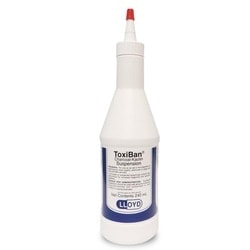
Indications and Usage:
ToxiBan® is most effective when administered as soon as ingestion of a toxicant is suspected. It may be used in some emergencies when absorption of the toxicant is nearly complete or the exposure was via a parenteral route. This latter application usually involves repetitive or multiple doses. Multiple doses may be used to interrupt the enterohepatic circulation of some toxins, thereby preventing their reabsorption. See package insert for more detailed information.
Contraindications:
There are no known absolute contraindications to the use of activated charcoal. It should not be given simultaneously or shortly before the oral administration of other therapeutic agents such as antibiotics, vitamins or amino acids. Antibiotic therapy should be administered parenterally when ToxiBan is used.
Dosage:
Suspension and Suspension w/Sorbitol
For small animals, use 10 to 20 mL per kg (5 to 10 mL per pound) body weight. For large animals, use 4 to 12 mL per kg (2 to 6 mL per pound) body weight.
Granules:
To make a thin suspension, mix 1 volume measure with 5 to 7 parts cold water (Example: 1 level cup ToxiBan to 6 cups water). Agitate vigorously for 10 to 30 seconds. For small animals, use 2 to 4 grams per kg (1 to 2 grams per pound) body weight. For large animals, use 0.75 to 2.0 grams per kilogram (0.35 to 0.9 grams per pound). One pound (453.6 grams) normally treats an animal weighing 225 to 600 kilograms (500 to 1300 pounds).
Administration:
ToxiBan Suspension and Suspension with Sorbitol may be given directly or mixed with a small amount of cold water to reduce viscosity. For Granule administration, use as a powder in food or dilute to create a suspension. When a suspension is created, agitate frequently to keep liquid uniform. A stomach tube is preferred, but an oral drench may be used in emergency.
ToxiBan® is most effective when administered as soon as ingestion of a toxicant is suspected. It may be used in some emergencies when absorption of the toxicant is nearly complete or the exposure was via a parenteral route. This latter application usually involves repetitive or multiple doses. Multiple doses may be used to interrupt the enterohepatic circulation of some toxins, thereby preventing their reabsorption. See package insert for more detailed information.
Contraindications:
There are no known absolute contraindications to the use of activated charcoal. It should not be given simultaneously or shortly before the oral administration of other therapeutic agents such as antibiotics, vitamins or amino acids. Antibiotic therapy should be administered parenterally when ToxiBan is used.
Dosage:
Suspension and Suspension w/Sorbitol
For small animals, use 10 to 20 mL per kg (5 to 10 mL per pound) body weight. For large animals, use 4 to 12 mL per kg (2 to 6 mL per pound) body weight.
Granules:
To make a thin suspension, mix 1 volume measure with 5 to 7 parts cold water (Example: 1 level cup ToxiBan to 6 cups water). Agitate vigorously for 10 to 30 seconds. For small animals, use 2 to 4 grams per kg (1 to 2 grams per pound) body weight. For large animals, use 0.75 to 2.0 grams per kilogram (0.35 to 0.9 grams per pound). One pound (453.6 grams) normally treats an animal weighing 225 to 600 kilograms (500 to 1300 pounds).
Administration:
ToxiBan Suspension and Suspension with Sorbitol may be given directly or mixed with a small amount of cold water to reduce viscosity. For Granule administration, use as a powder in food or dilute to create a suspension. When a suspension is created, agitate frequently to keep liquid uniform. A stomach tube is preferred, but an oral drench may be used in emergency.
Precautions:
ToxiBan is an adjunct in the management of poisoning emergencies. Prior to use, proper life support and gastric emptying must be implemented, if indicated. Because more than an hour may pass before ToxiBan can be administered without regurgitation after an emetic has been given, it may be more effective to give ToxiBan immediately because adsorption of a toxicant may be a more effective removal than vomiting.
ToxiBan produces black stools. These stools may have a diarrhea consistency and may persist for several hours. Sorbitol can create a profound cathartic effect. Proper attention should be provided to fluid and electrolyte needs to prevent dehydration, possible hypernatremia and even hypotension. ToxiBan Suspension should be used for multiple use, and cathartics should only be used intermittently during multiple dose activated charcoal use.
Ingredients:
MedChar (activated charcoal, USP), Kaolin, and Sorbitol (in granules and suspension with sorbitol). Granules contain wetting and dispersing agents.
MedChar (a medicinal grade of activated charcoal), contained in all three products, is a small particle size type of vegetable charcoal that possesses a relatively high activity as an adsorbent of organic chemicals. It has been processed by Vet-A-Mix to enhance its adsorptive power and reduce dustiness. Its adsorptive activity exceeds the USP standard for activated charcoal.
ToxiBan is an adjunct in the management of poisoning emergencies. Prior to use, proper life support and gastric emptying must be implemented, if indicated. Because more than an hour may pass before ToxiBan can be administered without regurgitation after an emetic has been given, it may be more effective to give ToxiBan immediately because adsorption of a toxicant may be a more effective removal than vomiting.
ToxiBan produces black stools. These stools may have a diarrhea consistency and may persist for several hours. Sorbitol can create a profound cathartic effect. Proper attention should be provided to fluid and electrolyte needs to prevent dehydration, possible hypernatremia and even hypotension. ToxiBan Suspension should be used for multiple use, and cathartics should only be used intermittently during multiple dose activated charcoal use.
Ingredients:
MedChar (activated charcoal, USP), Kaolin, and Sorbitol (in granules and suspension with sorbitol). Granules contain wetting and dispersing agents.
MedChar (a medicinal grade of activated charcoal), contained in all three products, is a small particle size type of vegetable charcoal that possesses a relatively high activity as an adsorbent of organic chemicals. It has been processed by Vet-A-Mix to enhance its adsorptive power and reduce dustiness. Its adsorptive activity exceeds the USP standard for activated charcoal.
Canine First Aid Kits
By VetInfo
Canine First Aid Kits with Essential Oils Reduce Dog and Dog Owner Anxiety! Canine First Aid Kits can be made up easily with essential oils. So, if you are looking for natural dog remedies for first aid, you have come to the right place.
Essential oils (therapeutic grade) can be used to help with motion sickness, cuts and wounds respiratory and urinary track infections. They also can assist with emotional trauma such as anxiety and fear.
And I understand that stress and anxiety comes with any kind of emergency; whether it is your pet or a family member. But, essential oils address the emotional side as well, so they are perfect for canine first aid kits!
As a matter of fact, sometimes we almost need to deal with the emotional side of an injury or emergency first so we can stay focused on what to do rather than panicking! Regardless, don’t forget to address the emotional component of an injury as well as the physical component!
Of course anytime our dog is seriously injured, we want to call our vet immediately. In the meantime, we can use some essential oils to keep all of us calm and possibly start some first aid until we arrive at the vet’s office.
For instance, if my dog was bleeding badly, I would immediately call the vet and start to use helichyrsum to stop the bleeding until I got to the vet’s office. I would also apply Peace & Calming or Trauma Life to her paws and my body to keep both of us relaxed and calm!
Canine First Aid Kits with Essential Oils Reduce Dog and Dog Owner Anxiety! Canine First Aid Kits can be made up easily with essential oils. So, if you are looking for natural dog remedies for first aid, you have come to the right place.
Essential oils (therapeutic grade) can be used to help with motion sickness, cuts and wounds respiratory and urinary track infections. They also can assist with emotional trauma such as anxiety and fear.
And I understand that stress and anxiety comes with any kind of emergency; whether it is your pet or a family member. But, essential oils address the emotional side as well, so they are perfect for canine first aid kits!
As a matter of fact, sometimes we almost need to deal with the emotional side of an injury or emergency first so we can stay focused on what to do rather than panicking! Regardless, don’t forget to address the emotional component of an injury as well as the physical component!
Of course anytime our dog is seriously injured, we want to call our vet immediately. In the meantime, we can use some essential oils to keep all of us calm and possibly start some first aid until we arrive at the vet’s office.
For instance, if my dog was bleeding badly, I would immediately call the vet and start to use helichyrsum to stop the bleeding until I got to the vet’s office. I would also apply Peace & Calming or Trauma Life to her paws and my body to keep both of us relaxed and calm!
If it is a minor injury than more than likely we can handle it on our own. But, we should know what we can handle and what we can’t.
In doubt, always call the vet and at least ask their opinion on what to do. Most of the time they are glad to help and they may not think it warrants going to the office anyway, but it may help to put your mind at ease!
What Essential Oils do I Keep in Canine First Aid Kits?
These are the oils that I use as an Essential Oil Canine First Aid Kit. Just click on the oil and it will tell you more information.
• Lavender Essential Oil
• Melrose Essential Oil
• Purification Essential Oil
• Di-Gize Essential Oil
• Peppermint Essential Oils
• Helichrysum Essential Oil
• PanAway Essential Oil
• Thieves Essential Oil
• Valerian Essential Oil
• RC Essential Oil
• Raven Essential Oil
• ImmuPower Essential Oil
• Valor Essential Oil
• Peace & Calming Essential Oil
• Clarity Essential Oil
• Brain Power Essential Oil
• Acceptance Essential Oil
• Trauma Life Essential Oil
• Ortho Ease Essential Oil
• Ortho Sport Essential Oil
In doubt, always call the vet and at least ask their opinion on what to do. Most of the time they are glad to help and they may not think it warrants going to the office anyway, but it may help to put your mind at ease!
What Essential Oils do I Keep in Canine First Aid Kits?
These are the oils that I use as an Essential Oil Canine First Aid Kit. Just click on the oil and it will tell you more information.
• Lavender Essential Oil
• Melrose Essential Oil
• Purification Essential Oil
• Di-Gize Essential Oil
• Peppermint Essential Oils
• Helichrysum Essential Oil
• PanAway Essential Oil
• Thieves Essential Oil
• Valerian Essential Oil
• RC Essential Oil
• Raven Essential Oil
• ImmuPower Essential Oil
• Valor Essential Oil
• Peace & Calming Essential Oil
• Clarity Essential Oil
• Brain Power Essential Oil
• Acceptance Essential Oil
• Trauma Life Essential Oil
• Ortho Ease Essential Oil
• Ortho Sport Essential Oil
|
You can keep either Ortho Sport or Ortho Ease Massage Oil Blend in canine first aid kits. They make great base oils for sprains, joint or muscle injuries.I use either ImmuPower or Exodus II as natural immune system boosters. Great if something is coming on or has come on!
I also always have Animal Scents Ointment a natural ointment that contains many therapeutic grade essential oils. It is fantastic for sealing and disinfecting wounds, cuts and scrapes. The alternative here is to use Rose Ointment They both work great for sealing wounds; especially if you apply other oils first. Lastly, you always want to have a small bottle of V-6 Mixing oil or pure grade vegetable oil for diluting, if necessary. Remember, a 20 pound dog requires way less oil than a 100 pound dog! |
Here I have listed the Dog First Aid Kit by category:
• Cuts, wounds and disinfection – Melrose, Purification (use in place of hydrogen peroxide or iodine), and Animal Scents.
• Cuts, wounds and tissue regeneration – Lavender, Melrose, Purification and Animal Scents.
• Pain – Helichrysum, PanAway, Ortho Ease, Ortho Sport, Peppermint and Valerian.
• Infection – Thieves, ImmuPower and Melrose.
• Respiratory/Urinary Tract – RC, Raven and Melrose.
• Inflammation – Helichrysum, PanAway, Thieves, Ortho Ease and Sport.
• Bleeding – Helichrysum and Geranium.
• Stomach (digestive, colic, constipation, diarrhea, motion sickness) – Di-Gize and Peppermint.
• Fractures, bone chips – Helichrysum and PanAway.
• Muscles (torn, spasm, sore, aching) – PanAway, Ortho Sport, Ortho Ease and Valor.
• Burns – Lavender (Second degree). First degree (outer skin only) –Lavender, Helichrysum, Melrose and Valor.
• Cuts, wounds and disinfection – Melrose, Purification (use in place of hydrogen peroxide or iodine), and Animal Scents.
• Cuts, wounds and tissue regeneration – Lavender, Melrose, Purification and Animal Scents.
• Pain – Helichrysum, PanAway, Ortho Ease, Ortho Sport, Peppermint and Valerian.
• Infection – Thieves, ImmuPower and Melrose.
• Respiratory/Urinary Tract – RC, Raven and Melrose.
• Inflammation – Helichrysum, PanAway, Thieves, Ortho Ease and Sport.
• Bleeding – Helichrysum and Geranium.
• Stomach (digestive, colic, constipation, diarrhea, motion sickness) – Di-Gize and Peppermint.
• Fractures, bone chips – Helichrysum and PanAway.
• Muscles (torn, spasm, sore, aching) – PanAway, Ortho Sport, Ortho Ease and Valor.
• Burns – Lavender (Second degree). First degree (outer skin only) –Lavender, Helichrysum, Melrose and Valor.
• Stroke – Brain Power (on head and brain stem), Valor (on paws).
• Insect stings, spiders, etc – Purification, Melrose, ImmuPower (adrenals/immune) and Thieves.
• Immune System – ImmuPwer and Exodus II.
• Courage and Acceptance – Acceptance and Valor
• Concentration and Focus – Brain Power, Clarity, and Peppermint.
• Calming, Relaxing, Trauma and Shock – Trauma Life, Peace & Calming, Valerian and Lavender.
• Coming out of Tranquilizers/Sedation – Brain Power, Clarity and Peppermint.
Remember we are talking First Aid here. There are many more oils that can fit in each one of those categories and may help your dog on a daily basis. But these are the ones I reach for time and time again and work quickly!
I always choose oil for relaxing and combine it with oil for courage or concentration when there is an injury or emergency.
• Insect stings, spiders, etc – Purification, Melrose, ImmuPower (adrenals/immune) and Thieves.
• Immune System – ImmuPwer and Exodus II.
• Courage and Acceptance – Acceptance and Valor
• Concentration and Focus – Brain Power, Clarity, and Peppermint.
• Calming, Relaxing, Trauma and Shock – Trauma Life, Peace & Calming, Valerian and Lavender.
• Coming out of Tranquilizers/Sedation – Brain Power, Clarity and Peppermint.
Remember we are talking First Aid here. There are many more oils that can fit in each one of those categories and may help your dog on a daily basis. But these are the ones I reach for time and time again and work quickly!
I always choose oil for relaxing and combine it with oil for courage or concentration when there is an injury or emergency.
My top choices would be Peace & Calming with Clarity. If I have a dog that is really upset, near hysterics, use Trauma Life and/or Valerian to really ground the dog as soon as possible.
My general rule of thumb on oils for concentration is that female dogs associate better with Brain Power, while male dogs will be more open to Clarity. But, in doubt, try both because they always let you know which one they need!
I know there are a lot of oils listed for the Canine First Aid Kits. But with time you will learn how and when to use them all! The oils are not that much different than the human or horse Essential Oil First Aid Kits, so you can usually use them for both! Just remember, essential oils for cats require some caution; so if you own a cat, please make sure you read through that section.
My general rule of thumb on oils for concentration is that female dogs associate better with Brain Power, while male dogs will be more open to Clarity. But, in doubt, try both because they always let you know which one they need!
I know there are a lot of oils listed for the Canine First Aid Kits. But with time you will learn how and when to use them all! The oils are not that much different than the human or horse Essential Oil First Aid Kits, so you can usually use them for both! Just remember, essential oils for cats require some caution; so if you own a cat, please make sure you read through that section.
Medical Kit
by Holistic and Organix Pet Shoppe
Gauze bandages (and tape) of all sorts
Smaller boards or bubble wrap for breaks or sprains
Saran Wrap/Cling Wrap for wrapping boards to limbs or fractured bones
Chemical free shampoo (wash off fleas and contaminants)
Calendula - external use (wounds, cuts, sores)
Colloidal Silver (cuts, ear infections, acne, hot spots, stings, rash, infections, mouth rinse)
Anti-inflammatory herbs such as Turmeric (for pain and inflammation)
CDB oil (for calming, pain etc)
Arnica Montana (homeopathic) for shock and pain
Yunnan Baiyao (shock, bleeding, trauma, dog bites, wounds, internal bleeding)
Benadryl and/or Quercetin (allergies/bee stings)
Gas-X or Mylanta Gas (for bloat) - smaller meals preferably homemade diet as kibble has a higher incident to cause bloat, low fat/low carb diet, probiotics, digestive enzymes, L-Glutamine and slippery elm will help avoid this. Avoid brewer's yeast, alfalfa, and soybean products. )
Apple Cider Vinegar-raw unfiltered (allergies, hot spots, indigestion, PH balance)
Activated Charcoal (for poisoning of toxins, food poisoning, ease vomiting and stomach cramps, upset stomach) Activated Charcoal does not absorb - Cyanide, ethanol, ethylene glycol, iron, lithium, methanol, mineral acids and salts. Toxiban is a product for poisoning as well. Keep on hand.
Imodium, Kaopectate, Pro-Pectalin or Hydrated Calcium Aluminosilicate Clay along with Slippery Elm. (for diarrhea)
Hydrogen peroxide (3%) induce vomiting (do not apply to wounds or open sores)
Sterile Saline Solution (rinsing, irrigating and eye rinse)
Mullein for coughs (also raw unfiltered honey)
Rescue Remedy for Pets or Bach Flowers (for anxiety/stress)
Gauze bandages (and tape) of all sorts
Smaller boards or bubble wrap for breaks or sprains
Saran Wrap/Cling Wrap for wrapping boards to limbs or fractured bones
Chemical free shampoo (wash off fleas and contaminants)
Calendula - external use (wounds, cuts, sores)
Colloidal Silver (cuts, ear infections, acne, hot spots, stings, rash, infections, mouth rinse)
Anti-inflammatory herbs such as Turmeric (for pain and inflammation)
CDB oil (for calming, pain etc)
Arnica Montana (homeopathic) for shock and pain
Yunnan Baiyao (shock, bleeding, trauma, dog bites, wounds, internal bleeding)
Benadryl and/or Quercetin (allergies/bee stings)
Gas-X or Mylanta Gas (for bloat) - smaller meals preferably homemade diet as kibble has a higher incident to cause bloat, low fat/low carb diet, probiotics, digestive enzymes, L-Glutamine and slippery elm will help avoid this. Avoid brewer's yeast, alfalfa, and soybean products. )
Apple Cider Vinegar-raw unfiltered (allergies, hot spots, indigestion, PH balance)
Activated Charcoal (for poisoning of toxins, food poisoning, ease vomiting and stomach cramps, upset stomach) Activated Charcoal does not absorb - Cyanide, ethanol, ethylene glycol, iron, lithium, methanol, mineral acids and salts. Toxiban is a product for poisoning as well. Keep on hand.
Imodium, Kaopectate, Pro-Pectalin or Hydrated Calcium Aluminosilicate Clay along with Slippery Elm. (for diarrhea)
Hydrogen peroxide (3%) induce vomiting (do not apply to wounds or open sores)
Sterile Saline Solution (rinsing, irrigating and eye rinse)
Mullein for coughs (also raw unfiltered honey)
Rescue Remedy for Pets or Bach Flowers (for anxiety/stress)
Homemade Pedialyte (dehydration)
Mix together:
1 quart water
2 tablespoons sugar
1/2 teaspoon salt
or
1 liter of natural mineral water
3 tablespoons sugar
1 small teaspoon salt
1/2 small teaspoon baking soda
The juice of half a lemon
And get to emergency clinic to see vet.
Mix together:
1 quart water
2 tablespoons sugar
1/2 teaspoon salt
or
1 liter of natural mineral water
3 tablespoons sugar
1 small teaspoon salt
1/2 small teaspoon baking soda
The juice of half a lemon
And get to emergency clinic to see vet.
Mineral oil/Olive oil (ear mites) (protect eyes from baths/rinses)
Rectal thermometer
Ipecac Syrup: To make dog vomit
Baking soda (make paste with water and apply to bee stings)
Isopropyl (rubbing) alcohol
Povidone Iodine (Betadine) mix with water to dark tea color for rinsing or irrigating wounds or removing toxins from paws)
Slippery Elm, L-Glutamine, Probiotics, Digestive Enzymes, Calcium carbonate (Ulcers /GI tract issues, GERD, Acid Reflux)
Remove Skunk Spray
In the plastic container, combine 1 quart hydrogen peroxide, 1/4 cup baking soda and 1 to 2 teaspoons of liquid soap. Add lukewarm water if needed (for larger dogs). Mix ingredients well. The solution will fizz, as a chemical reaction is occurring. Use immediately - do not store. Do not soak your dog with water prior to bathing. Promptly begin cleansing the affected areas thoroughly, massaging the solution deep into your dog's coat. You may wish to use a sponge or washcloth. Avoid getting the solution in the eyes, ears or mouth. Allow the solution to remain on your dog for at least five minutes (longer if strong odor persists). Rinse your dog well with lukewarm water. Repeat steps 3-5 as necessary until odor is gone.
Or keep on hand "Nature's Miracle Skunk Odor Remover"
For antifreeze poisoning in dogs
Get to vet as soon as possible. This is life threatening. The sooner you get them there, the better the chances. Once antifreeze starts to break down in liver, it's all over.
Cats same but rarely have a chance.
Bromethalin poisoning (type of rat poison) - decontamination (inducing vomiting and administer activated charcoal) is the primary treatment. Rush to emergency vet. Not all vets know about this poison or how to treat it. Also there is NO test for it.
Treatment of Heat Exhaustion
If you believe your dog is suffering from heat exhaustion, seek veterinary care immediately even if your dog’s condition does not seem serious. Cool water can be used to begin to decrease his body temperature during the trip to the veterinarian. Towels can be soaked in cool water and used to cover your dog. You can also place the towels between his legs and across his neck. Do not use cold water or ice. This may make the situation worse.
For bites and wounds
High pressure rinse (using tap water) like with waterpik for irrigating. Apply pressure to bleeding wounds.
For ear mites...click here
Rectal thermometer
Ipecac Syrup: To make dog vomit
Baking soda (make paste with water and apply to bee stings)
Isopropyl (rubbing) alcohol
Povidone Iodine (Betadine) mix with water to dark tea color for rinsing or irrigating wounds or removing toxins from paws)
Slippery Elm, L-Glutamine, Probiotics, Digestive Enzymes, Calcium carbonate (Ulcers /GI tract issues, GERD, Acid Reflux)
Remove Skunk Spray
In the plastic container, combine 1 quart hydrogen peroxide, 1/4 cup baking soda and 1 to 2 teaspoons of liquid soap. Add lukewarm water if needed (for larger dogs). Mix ingredients well. The solution will fizz, as a chemical reaction is occurring. Use immediately - do not store. Do not soak your dog with water prior to bathing. Promptly begin cleansing the affected areas thoroughly, massaging the solution deep into your dog's coat. You may wish to use a sponge or washcloth. Avoid getting the solution in the eyes, ears or mouth. Allow the solution to remain on your dog for at least five minutes (longer if strong odor persists). Rinse your dog well with lukewarm water. Repeat steps 3-5 as necessary until odor is gone.
Or keep on hand "Nature's Miracle Skunk Odor Remover"
For antifreeze poisoning in dogs
Get to vet as soon as possible. This is life threatening. The sooner you get them there, the better the chances. Once antifreeze starts to break down in liver, it's all over.
Cats same but rarely have a chance.
Bromethalin poisoning (type of rat poison) - decontamination (inducing vomiting and administer activated charcoal) is the primary treatment. Rush to emergency vet. Not all vets know about this poison or how to treat it. Also there is NO test for it.
Treatment of Heat Exhaustion
If you believe your dog is suffering from heat exhaustion, seek veterinary care immediately even if your dog’s condition does not seem serious. Cool water can be used to begin to decrease his body temperature during the trip to the veterinarian. Towels can be soaked in cool water and used to cover your dog. You can also place the towels between his legs and across his neck. Do not use cold water or ice. This may make the situation worse.
For bites and wounds
High pressure rinse (using tap water) like with waterpik for irrigating. Apply pressure to bleeding wounds.
For ear mites...click here
Pet Poison Hotline Number:
24/7 Animal Poison Control Center
855-764-7661
per incident fee applies
24/7 Animal Poison Control Center
855-764-7661
per incident fee applies




